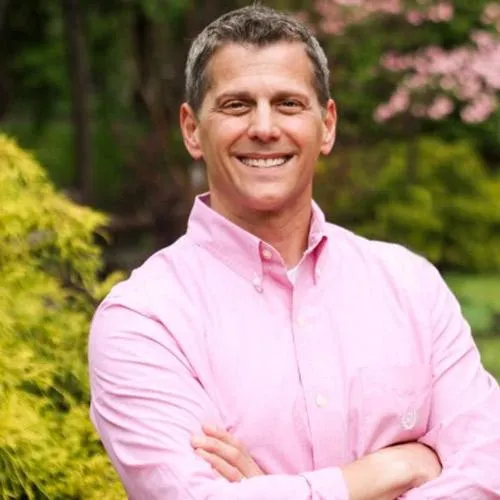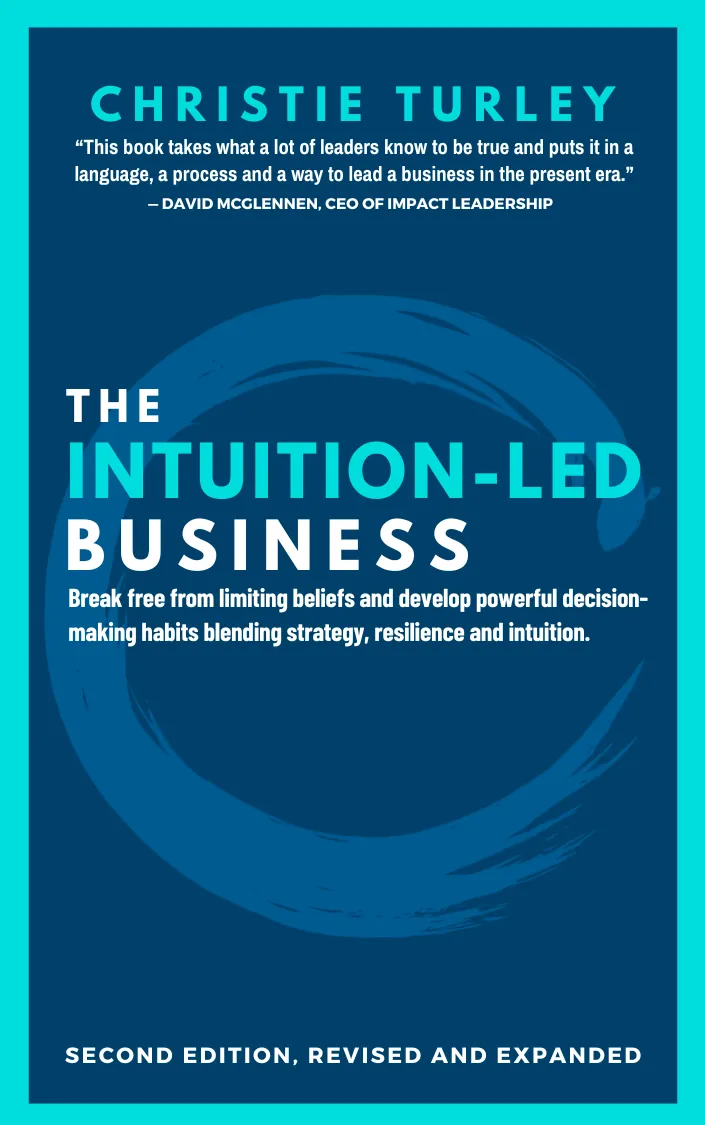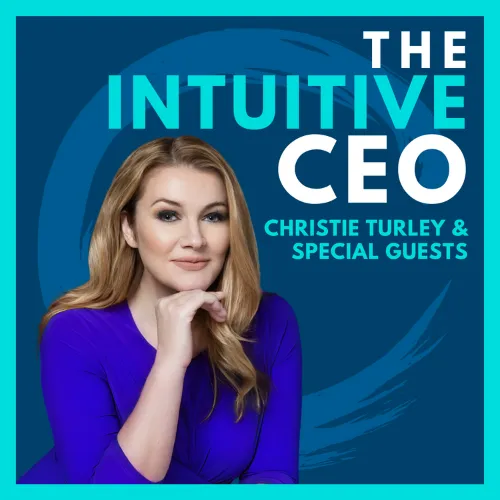
51: The 5 Military-Grade Lessons for Business Performance with Jeremy Richter
Looking for an edge to your business performance? Join me and Jeremy Richter as we discuss a combination of positive psychology, sports performance psychology and military performance psychology (and how to apply it all to business performance and mindset).
In this episode you’ll hear:
How Sports Psychology can help your thoughts, energy and attention to elevate your performance.
Key practices from his military experience to increase your confidence, motivation and leadership abilities.
How to apply the concept of resiliency in challenges, especially during difficult times in Covid-19 pandemic.
Watch on YouTube:
About Jeremy Richter
Jeremy has worked with thousands of people on improving their fitness, health, leadership, and ability to perform athletics or jobs at the highest level. This stems from his education and experience in Exercise Science and Sport Psychology. Jeremy specializes in taking concepts and theories from research and translating them into useful and practical skills for others.
LINKS:
Jeremy’s Twitter
Authentic Happiness Assessment
Claim Your Bonuses and Order My Book, The Intuition-Led Business: http://TheIntuitionLedBusiness.com/
Receive help with positioning, messaging and branding your business from with an intuitive approach and from the perspective of your Future self: https://christieturley.com/about
If you’re inspired by this episode, I’d love to hear your biggest Aha! moments. Take a screenshot of you listening on your device and post it to your social media and tag me, @christieturley!
Transcript:
Christie:
So this episode is gonna be really interesting because we’re gonna be blending a couple of different metaphors. We’re gonna have sports psychology metaphors, we’re gonna have military metaphors and how all of that actually applies to business, mindset, and motivating people—whether they’re people on your team, or your customers, or yourself, actually. So tell us a little bit about your background, Jeremy, and how you got started in this work.
Jeremy:
So, in grad school, I studied Sports Psychology, which essentially looks at getting your thoughts, energy, attention, where they need to be to perform at optimal level. And in this field, you start to realize, not only could this have helped me in athletics, but these concepts apply to anyone and any profession. We are humans at nature and how we think impacts how will we perform and how we all operate within the world and how we interact with other people. And so from grad school, I worked as a Personal Trainer and ran a weight loss program for a few years. And then I had a chance to work with the military as a contractor, with a company that has a government contract with the military—training Sports Psychology, Performance Psychology, and Resilience, which is just phenomenal experience.
Jeremy:
And besides that experience, I’ve also traveled to all 50 States speaking with 200 entrepreneurs about lessons learned and entrepreneurship. And besides that just lifelong learner and reader, and just taking in content everywhere I can.
Christie:
An all around good guy!
Jeremy:
Oh, I appreciate it.
Christie:
So, yeah, let’s talk about some of these top Sports Psychology principles that you teach in your work when it comes to leadership. I know you also teach soldiers how to shoot better, which takes a whole other level of mindset skills. So where do you feel called to start talking about first? Like you have so much we could cover today!
Jeremy:
Well, happy to talk about it. I’ll give a couple overview and probably just start with one and we’ll navigate from there.
Christie:
Okay.
Jeremy:
Some of these skills are very natural things that we know about. Like CONFIDENCE. “Hey, you have to be confident to perform well.” Attention control, focusing. We know you need to focus, but what does that truly mean? Energy management? Do you need to have more energy and get really excited? Or really calm down? Are you able to modulate as necessary? Goal setting. Setting goals matters as we know, and motivation within a school setting can be imperative and then imagery. And by imagery, you might have heard her as visualization before. Essentially it’s recreating or creating an experience in the mind.
Jeremy:
So you’re imagining something and it’s creating this mental movie, if you will. And so, all of this is based on research, which is great. It’s not just Jeremy’s thoughts on it necessarily, but the research itself. And the one area that I’ve gravitated towards since my undergrad was IMAGERY. This idea of like, what can I think and how’s this movie I have of myself? How can that lead to higher performance? And so, since you have mentioned the marksmanship out of the gate here, that’s something that I’ve been out on the range before. And essentially you have all the soldiers waiting around for there to turn. And sometimes people will go out, fire, they come back- They didn’t do so well.
Jeremy:
And so, whether it’s those that failed, or those that are waiting a numerous times, I’ve got them to partake in imagery. And so, what that means is, I’ll get them like out the bleachers. And with the military, they have to shoot prone supported, which means their weapon is resting on an object; and then prone unsupported, which means it’s not resting on an object; and then kneeling. So I have them go through the motions, except instead of shooting rounds, their weapons are empty. They’re aiming into bushes, and they imagine the process. And so, they understand, “I’m gonna shoot 40 rounds,” and they get practice before they go up and actually perform.
Jeremy:
This gives them an opportunity to regulate their thoughts, to regulate their energy levels, to make sure their focus is where it needs to be; to understand, “How does it feel? How hot is it? Is it blistering hot or is it cloudy? Is it raining? What’s the weather like?” —Get used to it. Get comfortable, familiar with that experience. And if they do that four or five times, by the time they go out there, they’ve already had five repetitions. And so naturally they’re gonna perform at a higher level. And it’s just a joy to see when they come back and report, “Hey! I did much better at that time.”
Christie:
Yeah. That’s great! So, I mean, how would you teach an entrepreneur two to utilize this? Like what’s the practical application for an entrepreneur?
Jeremy:
Yeah. So, granted entrepreneur is so broad and there’s so many possibilities, I think with imagery it’s gonna come to more of the technical aspect. If you think about, an entrepreneur has to be that technical person, a manager and entrepreneur in growing their business. A lot of times, it’s, “What’s the technical part? Are you gonna go on a sales call? Like, how’s that gonna go? Are you cold calling and just walking in somewhere? How are you gonna say hello? How are you gonna position yourself? How’s that conversation gonna go where you can put your best foot forward?” If you’re making a phone call, make an email, like anticipate how you want things to go and how you’re gonna modulate yourself if that person says, “I don’t want it.”
Jeremy:
Okay. Well, plan that, play that out. What’s that look like? You can have a dialogue back and forth anticipating common answers. Especially, a lot of times, if you’re making a cold call or sales call, it’s not the only one that you’re ever gonna make. It’s a number’s game. And so you can start to get frequent answers from people. And look to anticipate those and refine your responses to best meet them. And maybe you’re meeting someone that’s busy or someone that’s- wants to actually have a casual chat before you get into things. You can look to adjust and modulate yourself as necessary in that moment. From my one example, my brother’s more of a engineer machinist.
Jeremy:
For him, he has a programming machine to make a part and things get really expensive quickly if it goes bad. So for him, it’s using this imagery to anticipate, “Hey, if I make this program this way, how’s the machining gonna go? Is it gonna go how I think it is or something bad gonna happen? And can I catch it before? You know, it cost me several hundred dollars.”
Christie:
Yeah. I love that. It’s yeah. It’s the, “What if?” It’s the, “What if this?” “What if that?” And playing it out in your mind and role-playing is, it’s huge! Like, for sales calls, you know, it’s like practicing different types of clients or different kinds of personality types is a great example. So, or even rehearsing what you’re gonna say to your team, when you have to announce something that might go astray a little bit. It might not be the best of news. Or a keynote speech for that matter. So, yeah. That’s really, really great! So, yeah. Give us another one. What’s another principle?
Jeremy:
Oh, pardon me. Its- I can elaborate so much more, but that’s the nature. I would like to hit- like, you prompt me to hit a few different ones? For people-
Christie:
Yeah, you can go deeper if you want. Yeah, you can go deeper.
Jeremy:
Well, I think your example in the keynote is great! Anytime I’ve a keynote, you can rehearse your speech again and again. You can give your speech a hundred times. And then, that the one time that matters, you have that a hundred times of perfect practice exactly known—When you’re gonna pause? When you’re gonna emphasize something? When you’re gonna look around—All of those little variables and factors to make it powerful. But, to move on to the next one—Confidence. I think confidence is something that we all know is important. You got to be confident. Like, “I am confident!” But are you confident across the board in all areas? And if I prompt people, they usually have an idea of where they get confidence from.
Jeremy:
A past experience, right? If I have experience doing something that can make me feel confident. Even past experience doing something else, I can still leverage to then be confident. Right? And that’s very powerful. And people usually go there first with confidence, which makes sense. And, doesn’t really matter if it’s success or a failure. If you’ve done it, you learn from it—if you’re willing to learn from it, that is. And that will help you boost your confidence. But so too-can understand this, what they call “vicarious experience.” And this is kind of that living vicariously through your child—that’s a bad way where a parent tries to live through their child, right?
Christie:
That could be good, like going to Disneyland and seeing the world through their eyes or something, right?
Jeremy:
What a great point! Yes, you’re so correct. Oh yeah. Yeah, you’re right! I think my connotation has been negative, but, yes! So well said on the perception there. So, vicariously says, “Hey, if someone else can do it, who is somewhat similar to me, then I could do it! If I see someone else thriving and succeeding, then I can do it!” And that could be more specific too. Now, this doesn’t mean I could look at some of the best in the world and think I could be at their level. Like, I could look at Usain Bolt, run a 100 meters; I, as Jeremy, I’m not gonna run that fast, not gonna happen! So that’s- that isn’t as effective as seeing someone that’s more of my peer level and a task that I wanna do.
Jeremy:
But that being said, if I see someone else succeeding, then I can learn from their experience and then be able to have- be more confident going into that as well. Related to that is, “How am I feeling just physically?” I think, this is one of the things that we take for granted, except for when things aren’t going well. When you are very sick, you have a stomach bug, you ate something bad. You’re probably not feeling confident to take on the world. It’s, “Hey, let me stay at home and let me not see anyone, talking—I don’t want to do anything!” So when we are healthy and we can leverage that, and especially those that workout and understand how to push themselves day in and day out and have this physical health- That is a source of confidence.
Jeremy:
That can help you feel confident and a sense of pride in yourself. And then finally, you have PERSUASION. And persuasion is a two for one. I can encourage you, “Christie, you got this, come on. I believe in you. I trust in you. You can get it!” And also you start to feel a little more confident. Like, “Okay, this is kind of nice, this is fun. Someone’s supporting me, someone believes in me!” But, it doesn’t have to be based on someone else. You have your own thoughts, “I can do this! I can push myself, I’m capable, I have what it takes to get the job done.” So you can use persuasion from your self! And so, what’s nice is that, these four areas: experience, vicarious experience, physical state and persuasion—each one of them really just depends on my perception, right?
Jeremy:
Like, “How do I think about those? Am I leveraging those in a way that’s gonna build confidence?” And if I have four areas, it doesn’t matter what I’m doing. I can tap into four areas of confidence, modulate my amount of confidence to get myself where I need to be, to perform at an optimal level. And again, doesn’t matter if I’m on the range, doesn’t matter if I’m giving a keynote, making a sales call, talking to my employees, hiring a new employee for the first time, I can be confident—which is gonna help me to thrive.
Christie:
Yeah. That’s really great. Those four components, I feel like, you could spend a couple of days just talking about that and unraveling that.
Jeremy:
Yeah! It gets really exciting!
Christie:
Yeah! Ah, what a level of mastery, for sure! So talk to me about motivating people. You know, whether it’s people on your team or customers, you know, we’re talking offline about this example of telling people to calm down. It’s like, “No, wrong phrase!” Like, that’s the last thing someone wants to do when they hear the words calm down, right? “No! You calm down!” So, obviously that’s the wrong way to motivate people, but a lot of people’s go-to method! So talk to me about motivation.
Jeremy:
And, regarding the “calm down,” I can even come back later if we have time on energy management and what that looks like. Inverse MOTIVATION, this is another one. It’s really fun to get people involved. You know, ‘What motivates people? What motivates you? How do we motivate others?” And we can start to look at motivation a few different ways. One way is we can look at intrinsic motivation. So a lot of research done was saying people need to feel competent. They need to feel a sense of autonomy and relatedness. So competence means “Hey, I believe in my ability to do this job, to do this task.” Autonomy, “I’m doing something because I want to do it!” and I have a funny little clip on autonomy, it’s- I remember visiting my parents, you know, for the holidays and seeing the trash and thinking, “Oh, I should take out the trash.
Jeremy:
That would be nice.” And before I could do that, my mom says, “Hey, Jeremy, take out the trash.” All of a sudden I don’t wanna do it!”
Christie:
Hahaha So true!
Jeremy:
It was just like a really simple example, but that’s just a little glimpse of autonomy! When it was my idea, I’m like, “I’m so nice! How would that-” And the second she mentions it, which of course, I should be the good son. I should do it. That like, there’s no question, I still did it. But there’s that moment of, “I don’t want to.”
Christie:
Yeah. “Don’t tell me what to do.”
Jeremy:
Yeah! And then relatedness, like, “Can I belong to this group? Am I offering value within this group?” And we have those senses. And then, we can really expand motivation, and consider intrinsic motivation. And intrinsic motivation just means that the task itself is inherently enjoyable. There’s no other reason to do it besides the fact that I want to do it. If you think about kid’s playing, they’re just playing, there’s no other purpose. There’s playing. It’s just fun. Some of our hobbies or things that we like to do is just fun. I like watching sports. I spend hours and hours watching sports.
Jeremy:
No one tells me to do that, but yeah, I do it. I just like it! It’s what I enjoy to do. Unfortunately, life isn’t just what we want to do. There’s a lot of other things and even in business, there’s the parts we love and the parts we need to do. And then we look towards extrinsic sources and even here, we have a little bit of a continuum. One of the most classic ones is rewards and punishment. And we know this is very classic. You do this- And you’ll get this reward. Name the reward- time off, money, ice cream, just depends on the person and what the task is. Or a punishment, “Hey, if you don’t do it, this is gonna happen.”
Jeremy:
It’s like, “Oh no, I don’t want that to happen.” And again, that, whether that’s kids or, you know, employees or yourself, it doesn’t really matter. So we know those are classic examples. As we start to navigate towards more of an internal source. Though we see shame and guilt, we as humans do not like feeling shamed with guilt. It’s not comfortable. It’s not fun. It’s like, “Ugh, I don’t want to feel this way.” So I don’t like it at all. And I will often do things so that I don’t feel shame or guilt. “I better return that phone call because of this guilt,” or “I better get this done because I feel guilty. I’ve put it off so long.” There’s a sense of shame, “Oh, jeez.
Jeremy:
It took me so long to do. I better get it done now.” For both of these categories, those are more in the instrumental. Meaning, if you add in those sources, action will take place. You take away, action ceases. So with the sustainability, it’s not very high over time. At some point we don’t care. At some point, the punishment doesn’t matter. At some point the award doesn’t matter. At some point the shame and guilt doesn’t matter. We give in to it. And I remember, since our talk about being a kid once, I guess that I’m in that frame of mind. I remember, one time talking back in, I get in trouble. And it’s like, at this point, I’m so deep, I’m gonna say my peace and just deal with it.
Jeremy:
I don’t really care. Which is just, you know, it’s just one of those examples that it just doesn’t matter. It’s not a motivator. But we can look to shift towards more powerful motivators. If, and this is really over time, right? So, the others can be good for a one quick moment of motivation. But over time it’s not gonna be as effective. So now, though, if we look to consider the value of the behavior. Like by doing this behavior, like good things are gonna happen. Like, maybe I’m making those cold calls because that’s gonna lead to business. Like, I don’t wanna do it, but this it’s gonna lead to business. And like, that’s a great thing! So I gotta do it. And that’s what I care about—the business, the thrive, that- be my own boss, that aspect comes alive.
Jeremy:
And you can see how that’s inherently gonna be more powerful over time and compared to the other two areas. And then finally, we come to self identity. Who are you at your core? These are your core values that represent who you are at your core, the things that drive you. If you can tap into your core values and leverage your core values in whatever it is you’re trying to do, you will be more motivated. Matter of fact, you will have less anxiety. You will have more effort and persistence. You will have more satisfaction. You’ll have more of this, something called being in flow, which I could talk for days on being in flow.
Jeremy:
And if I have time to come back to that I’ll hit on it. But you can also have more autonomy! You do that because you want to do it. And that is the most powerful, like means of motivating for yourself, getting yourself to do anything, or getting others to do things. And what’s great is that, some of those kind of more positive emotion. You’re gonna be happier. You’re gonna feel more at home in their skin and more enjoyable to be around. It’s a win-win on all accounts. If we can tap into that, just takes some more effort, from time to time.
Christie:
Yeah, it truly does. And you know, happiness is found within. It’s not something that is an external factor. So, I definitely feel like, learning all these principles of our inner game is so important to making sure we’re creating a life that we love, and that we’re in a state of happiness. So that’s awesome! So, talk to me a little bit about this resilience that you teach to soldiers and the military. I mean, resilience seems very central to everything that they do.
Christie:
And I feel like sometimes, especially after this whole pandemic situation, I feel like we are in a little bit of a war—a little bit of a spiritual war, a mental and emotional game of war. And so talk to us a little bit about resilience and, maybe some things that we can start practicing or shift our perspective on.
Jeremy:
Yeah, absolutely. And I think there’s that mental, emotional, spiritual war, and frankly the longest war in our history still going on. And I think sometimes we forget about that. And it’s interesting to just realize, “Oh yeah, that’s taken place,” and how impactful that is on so many people. So luckily, in our program, there is some collaboration with the University of Pennsylvania and Dr. Karen Reivich and developing this amazing program, along with so many other collaborators. And essentially with RESILIENCE, and how we look to, you know, get after it’s bouncing back and thriving from adversity. And it’s interesting.
Jeremy:
We say thrive, not just survive, right? Because like surviving, it can be powerful. Like, you have to get by. But thriving! That’s the next level. Like, “Hey, things are going great now. It’s not just bouncing back, but, are you willing to take calculated necessary risk? Which can be hard. It can be very challenging to put yourself out there. And yet, as so many entrepreneurs know, like if you do, the rewards can be tremendous! And how you define success is gonna be up to you. Whether that’s monetary or, you know, freedom-so many different ways! And sometimes you might not succeed, but it’s still a great experience because you learn things. You have this willingness to say, “Hey, I’ll try.
Jeremy:
I’ll see what I can do.” And when we think about our resilience, and I think, just like the stuff of motivation, self-determination theory I mentioned is, we could get to research, but yeah it’s the common sense blending that’s really great. It’s like, “Yeah, makes sense.” We think about resilience, is like, “Am I aware of what I’m thinking? Am I aware of how I’m feeling emotionally? I’m not aware of what I’m doing. If I’m aware of those things, can I change it? Can I regulate them to a degree? Because if I can, that’s very powerful! It’s so much easier said than done. Especially once you start to get deeper and deeper and understanding people and all things that make it hard for us to do that.
Jeremy:
And then there’s OPTIMISM. And Dr. Seligman has done so much research on optimism and people often say, “Hey, I’m optimist.” “I’m a pessimist.” “I’m a realist.” Now you’re a person is what you are. We have thinking styles. And people say, “I’m a realist.” Well optimism should be right to reality. And when we talk about that’s exactly the case. If it’s, how people typically use it a lot of times that’s pessimistic thinking. Which we know pessimistic thinkers might under or overestimate the amount of control they have, they might not see new creative strategies, they might give up easily compared to seeking new opportunities.
Jeremy:
Whereas optimistic thinkers are gonna be more creative, are gonna be more satisfied with their lives. They’re gonna have less hopelessness and helplessness. They have better relationships, better sleep, better performance, better lives, better relationships. It’s just crazy powerful! And that’s just how you view the world again. So this constant theme of, “Hey, how my view in the world really matters?” And then, MENTAL AGILITY. “Can I look at something from a different lens? Can I see something from a different lens?” Which it seems to be challenging these days. You know, if you just scroll through social media, it’s, “Hey, you see it’s one way or this other way.”
Jeremy:
And people are just following the line and that’s it. And that can be an unfortunate, and that’s an overgeneralization, right? If I had the data there’s obviously others as well, but it’s just a reminder to say, “Can I empathize with someone? Can I truly put myself in someone else’s shoes?” It can be hard, but although, it could be powerful to see that perspective. And then, the last two aspects, or, understanding that we all have our strengths within us. And there’s something, this is work on character strengths. And there’s something called, Values in Action Institute. And there’s these 24 character strengths determined through this incredible research across culture and across time—What character strengths make up the best of people?
Jeremy:
And you can look to identify what are your signature character strengths. These character strengths make up “you” at your core. And when you leverage them, you can overcome obstacles more effectively, you will have more energy throughout the day, you’ll feel more like in tune to your self and it’s just incredibly powerful. And then finally, the last one—we’re not alone. Other people matter. Humans are social creatures and “Are you appreciating and cultivating relationships?” Because my goodness! What a rich world it can be if you do that. So, those are some competencies of our Resilience Program, that again, so many researchers put time and effort into developing.
Jeremy:
And it’s just truly amazing what that can do for you as you start to live those things. And often people say, “Hey, I’ve been doing this, but now I have language.” I’m like, “Great! That’s The whole key—is be more purposeful!” And a lot of times, as you live life, you develop things over time, but you can be a little bit more effective and purposeful from moment to moment.
Christie:
Yeah, completely true! Now I wanted to back up a little bit and talk a little bit about the character strengths. I mean, there’s so many things that you said that were so interesting. But is the research that you’re teaching, is that kind of like the CliftonStrengths finders? Like there’s certain traits that like, as a collective, humanity, we all possess and you have these top ones and this other person has these other top ones. Is that kind of what you’re learning?
Jeremy:
So, unfortunately, I’m naïve to the one that you mentioned. So I can’t speak too well on that. The one that I’m familiar with is basically a team of 55 researchers, like set out to find these strengths. And they looked at numerous religious texts, they looked at children’ books, folk tales, music. They looked at, some of my favorite ones. Oh, I’ll come back to it. They looked at obituaries, tattoos, graffiti. They looked at Pokemon cards, which cracks me up! Harry Potter-they like that. So basically they looked at so many things across the board and they had to relate across culture and across time.
Jeremy:
And it had to be independent of each other, as in, there couldn’t be bleeding over. They had to stand alone as a strength in itself. And it had to be something that people aspired to. And there’s a handbook. It’s like 800-some pages. It’s a massive handbook of how they came about this research and of all the 24 character strengths and what they represent. And what’s nice is, there is a survey that you can go through Authentic Happiness, and you can find the values and action survey. It’s reliable over time, meaning, that there’s other things in regards to some personality stuff, that’s a little different where it’ll change depending on when you take it. This is pretty consistent.
Jeremy:
Like, I’ve taken it seven years ago, like halfway through in a couple of years, since. And my signature care strengths are the same, they might move a slot or two, but it’s like, that’s who I am. And that’s really powerful when you consider it, “Hey, it’s gonna be consistent over time.” Now, if, I was really looking to make some changes in my life, or has real significant life events then naturally, some things can be changed and some characters strengths, we know based on research, we can deliberately change. Whereas other ones like, self-regulation and hope and optimism. Those are two that we know we could change. We know if research says we can develop those. Humor and playfulness is like, maybe, you know, someone might try to be more humorous, but you’re like, that’s kind of weird.
Jeremy:
Like, it didn’t really work. Which I’m glad you laughed at that because that’s one of my signature strengths, is humor. So I thought it was funny I’m glad that you did too.
Christie:
Well, we all know someone who thinks they’re a comedian. So that’s so interesting because yeah, I mean, in the work that I do with branding and marketing, you know, knowing really what your strengths are and your unique difference is so key to being able to craft a brand that truly stands out and position it in a way that your audience is immediately fascinated by it. You know, that they’re like, “What’s that? That’s different.” You know, it’s not a commodity. And we’re not commodities! Yet, we tend to want to focus on all of these other areas that maybe, we’re pretty good at, but our zone of genius is like, point two percent of the whole.
Christie:
So I’m always fascinated by different assessments and I’ve taken all of the personality tests. I know what you’re talking about. You know? How things can change because in Myers-Briggs that’s probably one of my top favorites. But yeah, sometimes, I’m an INTJ. Sometimes, I’m an INFJ. Sometimes I’m an E, an extrovert and it’s like, yeah. It just changes. But the character strengths, I mean, that’s your talking about your soul’s DNA right there.
Jeremy:
And what’s like powerful is like, for me, just a quick example then, how it relates to other people. I took it and, I saw, curiosity and interest in the world is one of my signature character strengths. And it was like, “Ah, no wonder, I act the way I did.” I had gone and see some friends in Germany. And I was like a toddler. I was like, “What’s that?” “What’s this?” “What’s that?” “What’s that?” “What’s this-” And I remember I apologized. I’m like, “I’m sorry guys.” Like, I don’t know why. Like, I don’t know why I can’t keep that to myself. You know, I’m sorry. Like, it’s just crazy! I just get so curious! And then you take this and you go, “Oh, this is like, that makes so much sense!
Jeremy:
I am that guy!” And now, it’s like, I know me better. And I can leverage that better! And whether I learned something or doing something I don’t want to do, I can leverage curiosity. And also now, it’s much more enjoyable. And so when you think about, people, if you have a team, what if you knew the signature strengths of everyone? What if you saw people through a lens of strengths? Why did they do that? That’s not what I would do. Well, maybe they’re leveraging the best of themselves. How can you cultivate that? How can you leverage that? And then, if it’s just you making sales calls or doing the technical aspect, or doing a keynote, you can pull upon these, signature character strengths.
Jeremy:
And each of those are gonna feel more rewarding. You’re gonna feel more like yourself. You’re gonna be better at them because you’re bringing the best you forward. And it’s just crazy powerful when you start to really tap into it more and more.
Christie:
Yeah, it really is. It’s a good way to build a very strong and cohesive team too. Because if you’re playing to everyone’s strengths, instead of like wishing someone had a certain strength, you know, you’re gonna have such bigger results and you’re gonna appreciate your team more. You’re gonna appreciate yourself more. And I feel like self-discovery and having self-awareness, is so important in being a leader because the more self-aware you are, the more connected you are with yourself, the more connected you can be to other people, including your team and your customers. And you’re just, you’re gonna be more aligned to everyone around you.
Jeremy:
Yeah, absolutely. Absolutely! And when you layer that in now, with some other stuff we talked about. If I have really solid core values for this organization that align with me as entrepreneur, now I have this alignment, I’m more motivated if I have other employees, their alignment as well. But then, we’re all operating with our strengths together. And if we have this environment of growth, and development, and teamwork, now, also you’re changing. It’s not just work. Like this is a fun experience to be a part of. And everyone gets to bring their best selves day in and day out. And it’s gonna mitigate so many possible, you know, like, issues that could arise and you get instead more positive emotion, more autonomy, more creativity, less anxiety, like this, the benefits, as you start to layer these things just start to explode.
Christie:
Yeah. And I’m sitting here watching you with the background of the golden gate bridge behind you. And it’s like, so metaphorical to me right now, because it’s like, it’s a bridge with everything that you’re teaching. It’s a bridge, right? It’s a way that we can connect with ourselves and with humanity to motivate ourselves and each other to build a better world.
Jeremy:
Yeah. So many ways you could take that metaphor. And I appreciate that. I was like, “Oh, that’s the good stuff right there. Absolutely. I think you’re spot on.
Christie:
Yeah. Well, this has been so great! So I’d love for you to tell the audience, how they can learn more about you and what it is that you do as well as we can also put any links in the show notes. So, including that really cool- was it Authentic Happiness, was the assessment for the character thing?
Jeremy:
Yeah. That’s a website, AuthenticHappiness.com
Christie:
Yeah we’ll put that in there too.
Jeremy:
—and Values In Action.
Christie:
And then after you’re done with that, just roll right into your final thought, your final negative wisdom for us.
Jeremy:
All right. So you can find me on Twitter, Jeremy W Richter. And also there’s a website called Rawr Learning, RAWRLearning.com -just has a massive reading list that buddy and I have accumulated the last decade and a half, plus some blogs and other resources, just a chance to learn things nothing more than that. So if there’s ways to reach out or even on LinkedIn, just send me a message and I’ll be glad to connect with people. And I think the last thing to leave with is something that, you know, came up during grad school. And I’ll explain it. And what it truly means is, it says, “Be a love cat.”
Jeremy:
And it’s a funny phrase. And it means to be an energy giver, not energy sucker. And some people look to just kinda take the life out of a room, take the life out of people, and that’s not fun. So instead, just be a love cat, it means just put out positive vibes into the world. Bring positive vibes to each other. Look to help each other out. Be fun to be around. Be kind. Be helpful. Be nice. And that’s where the website RAWR, is kind of like, well I used to write out my buddy’s papers, and I help edit it out. I’m like, “Rawr!” Like a love cat. And so you can see that kind of full circle there. And so just be a love cat. Be nice to each other, be helpful, bring good vibes.


















